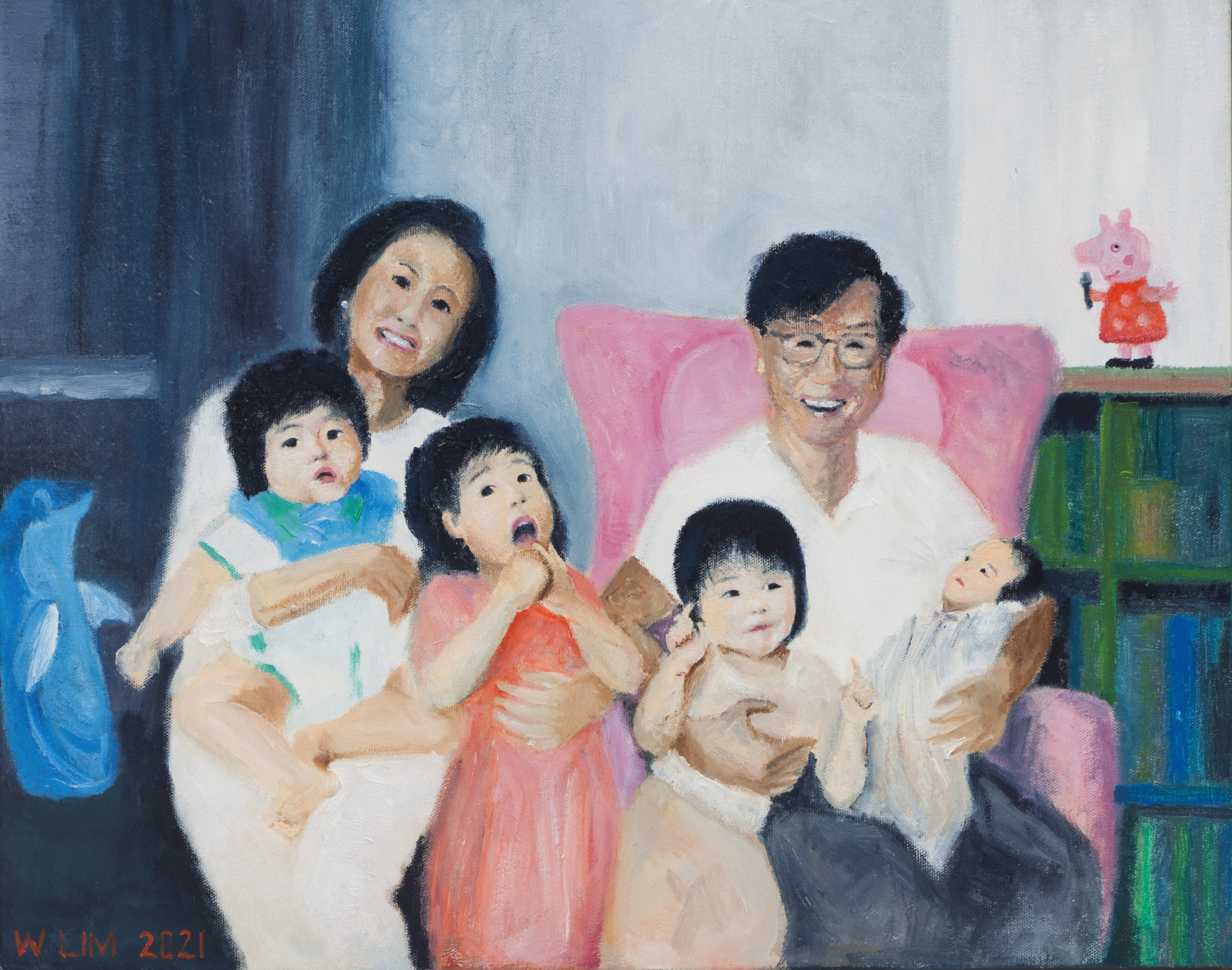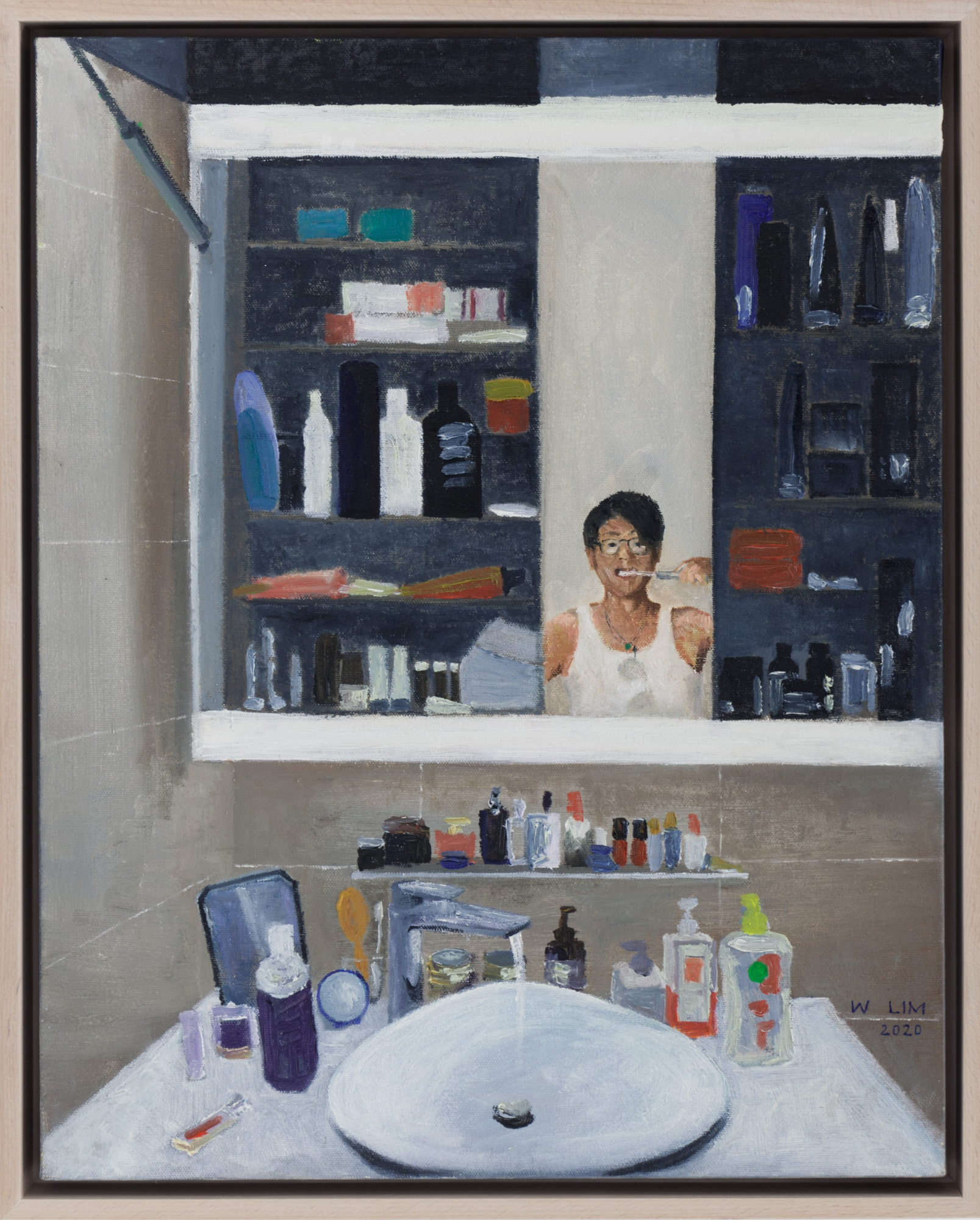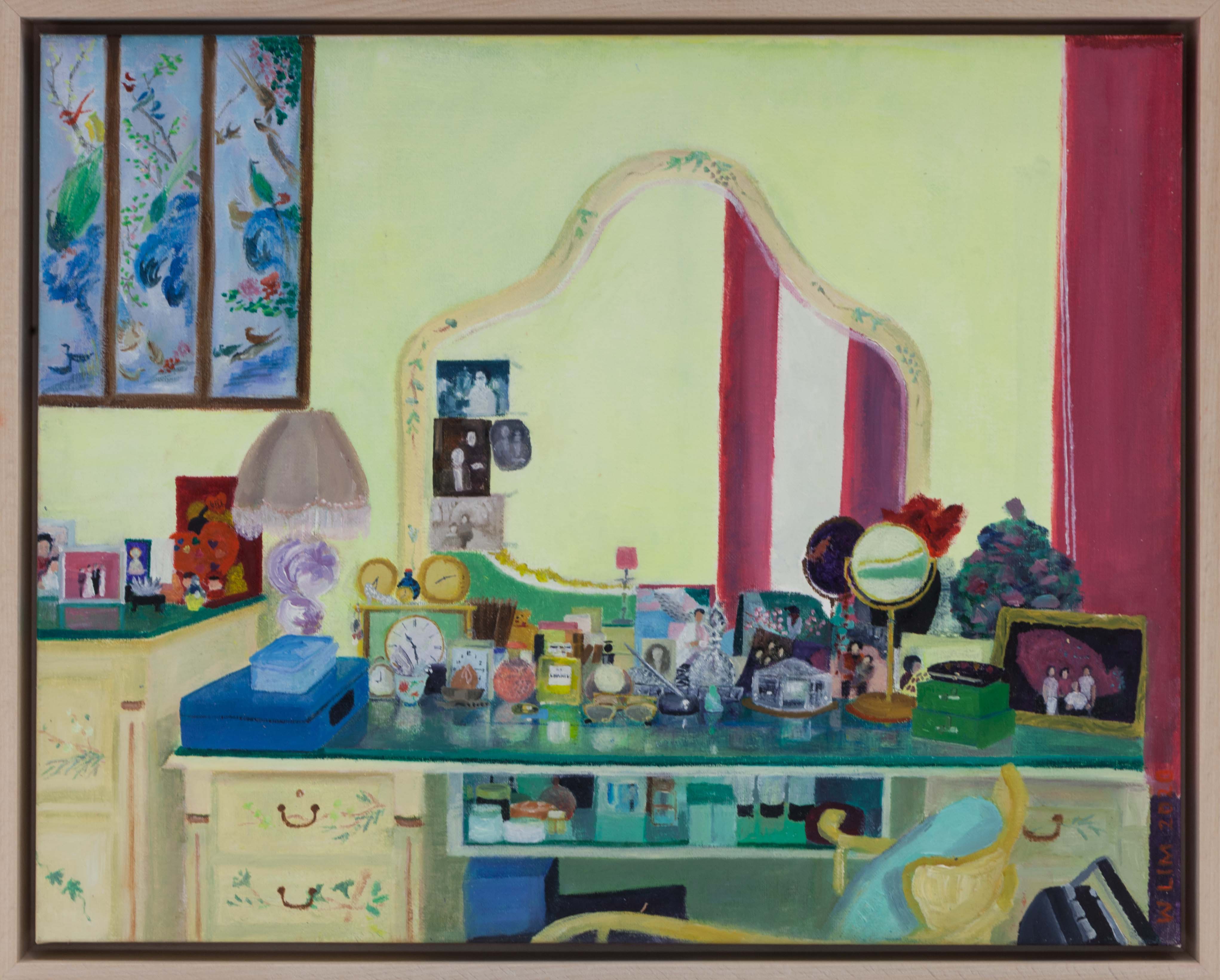Shows
William Lim: “A Year of Lost & Found”


The Covid-19 pandemic has wreaked incalculable loss: of lives, opportunities, rituals and events, and even personal connections. Grieving for those losses and reclaiming the altered realities of the world are plainly difficult processes, impacting people in myriad ways that we see rippling across communities. For Hong Kong architect, artist, and collector William Lim, the past year was one of both personal mourning and family celebration, as recorded in his canvases exhibited at Grotto Fine Art in “A Year of Lost & Found.”
At the gallery’s entrance, a wall of printed-out photographs showing Lim and his wife with three grandchildren, alongside images of various apartment and office interiors, set the scene for a sentimental reflection on his personal and family life. Opposite was a washy painting in teal hues of a facemask and hand-sanitizer bottle, dated April 5, 2020, already more than two months into Hong Kong’s Covid-19 experience.


Lim’s pandemic-coping activity was taking up oil painting. Already a competent draughtsperson—as evidenced in the exhibition by a series of drawings from 2010–11 of airplane interiors done in ballpoint pen on the back of flight tickets—Lim focused his forays in oil on the locales of his architecture office in the Hong Kong Art Centre, his home overlooking the Hong Kong skyline, and the interior of his late parents’ apartment. Additionally there are self-portraits based on photos of himself, such as of Lim brushing his teeth in front of a bathroom mirror or training at home, as well as posed with his sons for a Tatler magazine spread or with his wife and grandchildren. Many of the compositions are richly detailed with objects of Lim’s cross-cultural collecting: the triptych Workplace 2 (2020), for instance, reveals an office overflowing with art books and magazines, small figurines, statues, and artworks on the walls, with views of the Grand Hyatt and the Hong Kong Convention and Exhibition Centre out of the window. Scrutinize a close-up of a desk, in Parasite Books (2020), and familiar art publications and catalogues come into focus, signaling, perhaps, Lim’s revisiting of exhibitions including Para Site’s look at the cultural legacies of epidemics in Hong Kong, “A Journal of the Plague Year,” from 2013.

As described in the exhibition text, 2020, for Lim, was marked by the death of his mother and his older brother, as well as the birth of his second and third grandchildren. Along these narrative arcs, Lim transformed several of the photographic portraits hanging by the entrance into oil paintings, including one of his three grandchildren posed on a bed together, and another of himself and his wife with the girls in their laps. Painting evidently became part of Lim’s grieving process for his mother, as several works depict her pink-curtained, yellow-walled room and dressing table, full of her perfume jars and other sentimental items. These paintings feel weighted by attachment to the absent figure whose presence no longer stares into the large scalloped mirror resting on the table. Yet, in another triptych, Lim shows us his hand holding a brush, rendering the plants on his patio while his two grandchildren at play, with the Hong Kong skyline and Lion’s Rock behind them—a knowing portrayal of the cycles of loss and renewal that come for every generation.
HG Masters is ArtAsiaPacific's deputy publisher and deputy editor.
William Lim’s “A Year of Lost & Found” was on view at Grotto SKW, Hong Kong, from June 18 to July 10, 2021.







